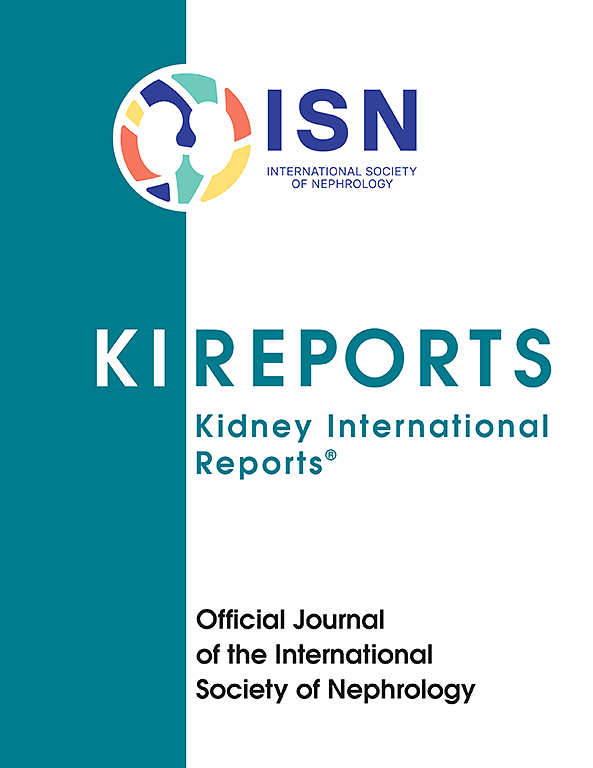Validating the SONG-PKD Pain Instrument, a Core Outcome Measure for Pain in ADPKD
IF 5.7
2区 医学
Q1 UROLOGY & NEPHROLOGY
引用次数: 0
Abstract
Introduction
Pain is a critically important outcome in autosomal dominant polycystic kidney disease (ADPKD); however, it is infrequently and inconsistently reported in clinical trials. This study aimed to validate the Standardized Outcomes in Nephrology-Polycystic Kidney Disease (SONG-PKD) Pain measure, which includes 3 items related to pain (frequency, severity, and impact on life participation) measured on a 5-point Likert scale, in adults with ADPKD.
Methods
A total of 316 adults with ADPKD from 21 countries participated online. The median (interquartile range) age of participants was 56 (44–66) years, 219 (69%) were female, and 222 (70%) had a university degree or higher. Participants completed a demographic questionnaire, brief medical history, and 4 pain measures at baseline. The pain measures were readministered 2 days later. Internal consistency was evaluated with Cronbach’s alpha. Test-retest reliability was assessed using intraclass correlation coefficient (ICC), and convergent validity was assessed using Spearman’s rho. Known groups comparisons for patients with or without a history of kidney complications were performed using a Mann-Whitney rank sum test.
Results
The SONG-PKD Pain measure demonstrated high internal consistency (0.94, 95% confidence interval [CI]: 0.93–0.95) and test-retest reliability (0.92, 95% CI: 0.90–0.94). There was a high convergence of SONG-PKD Pain with the Brief Pain Inventory-Short Form (BPI-SF; 0.84, 95% CI: 0.80–0.87) and a visual analog scale (VAS; 0.84, 95% CI: 0.81–0.87). There was a significant difference in the median scores of patients with and without a history of complications (4.0 vs. 0.0, P < 0.001).
Conclusion
SONG-PKD Pain instrument is a brief and simple measure that has demonstrated strong psychometric properties.

求助全文
约1分钟内获得全文
求助全文
来源期刊

Kidney International Reports
Medicine-Nephrology
CiteScore
7.70
自引率
3.30%
发文量
1578
审稿时长
8 weeks
期刊介绍:
Kidney International Reports, an official journal of the International Society of Nephrology, is a peer-reviewed, open access journal devoted to the publication of leading research and developments related to kidney disease. With the primary aim of contributing to improved care of patients with kidney disease, the journal will publish original clinical and select translational articles and educational content related to the pathogenesis, evaluation and management of acute and chronic kidney disease, end stage renal disease (including transplantation), acid-base, fluid and electrolyte disturbances and hypertension. Of particular interest are submissions related to clinical trials, epidemiology, systematic reviews (including meta-analyses) and outcomes research. The journal will also provide a platform for wider dissemination of national and regional guidelines as well as consensus meeting reports.
 求助内容:
求助内容: 应助结果提醒方式:
应助结果提醒方式:


